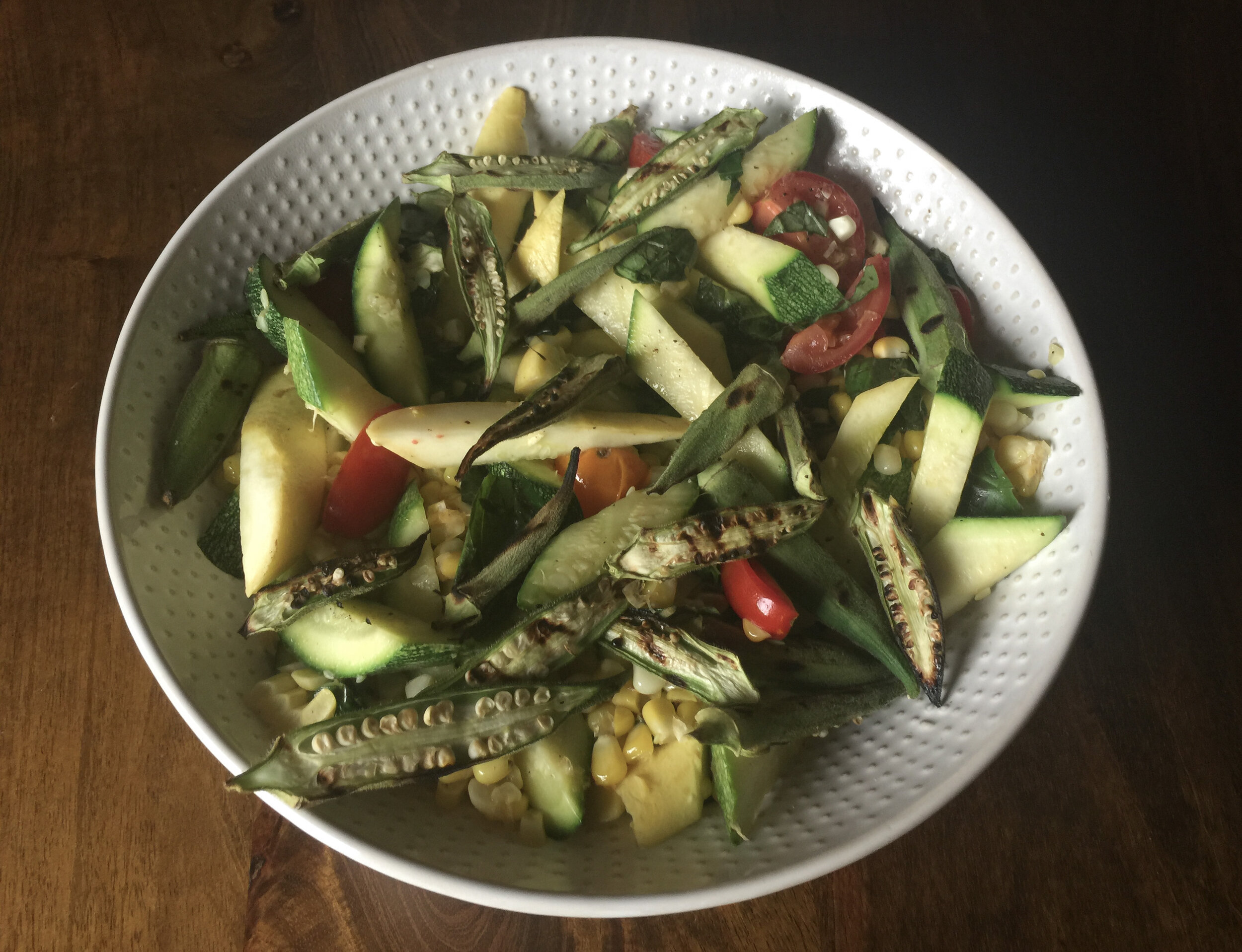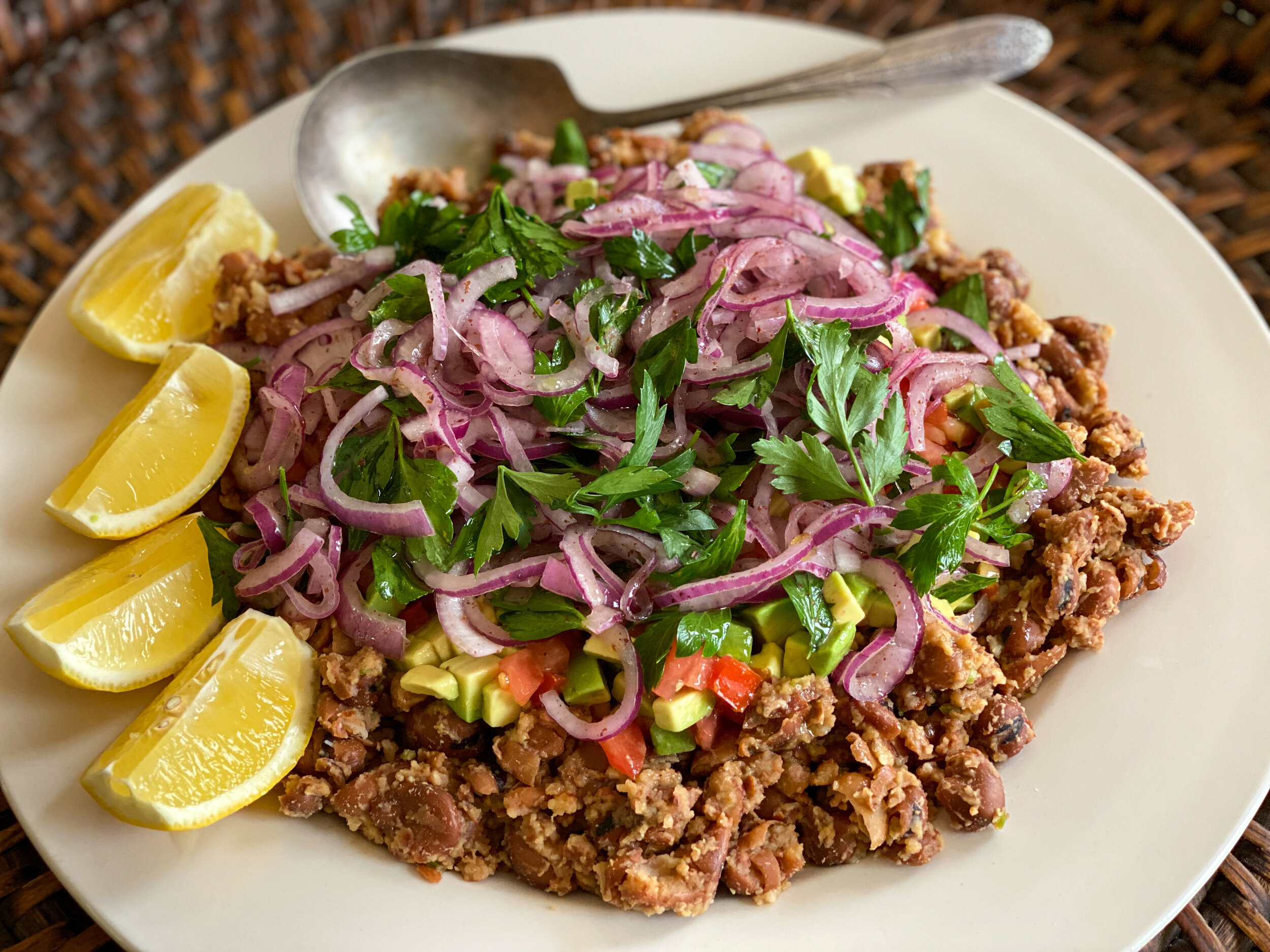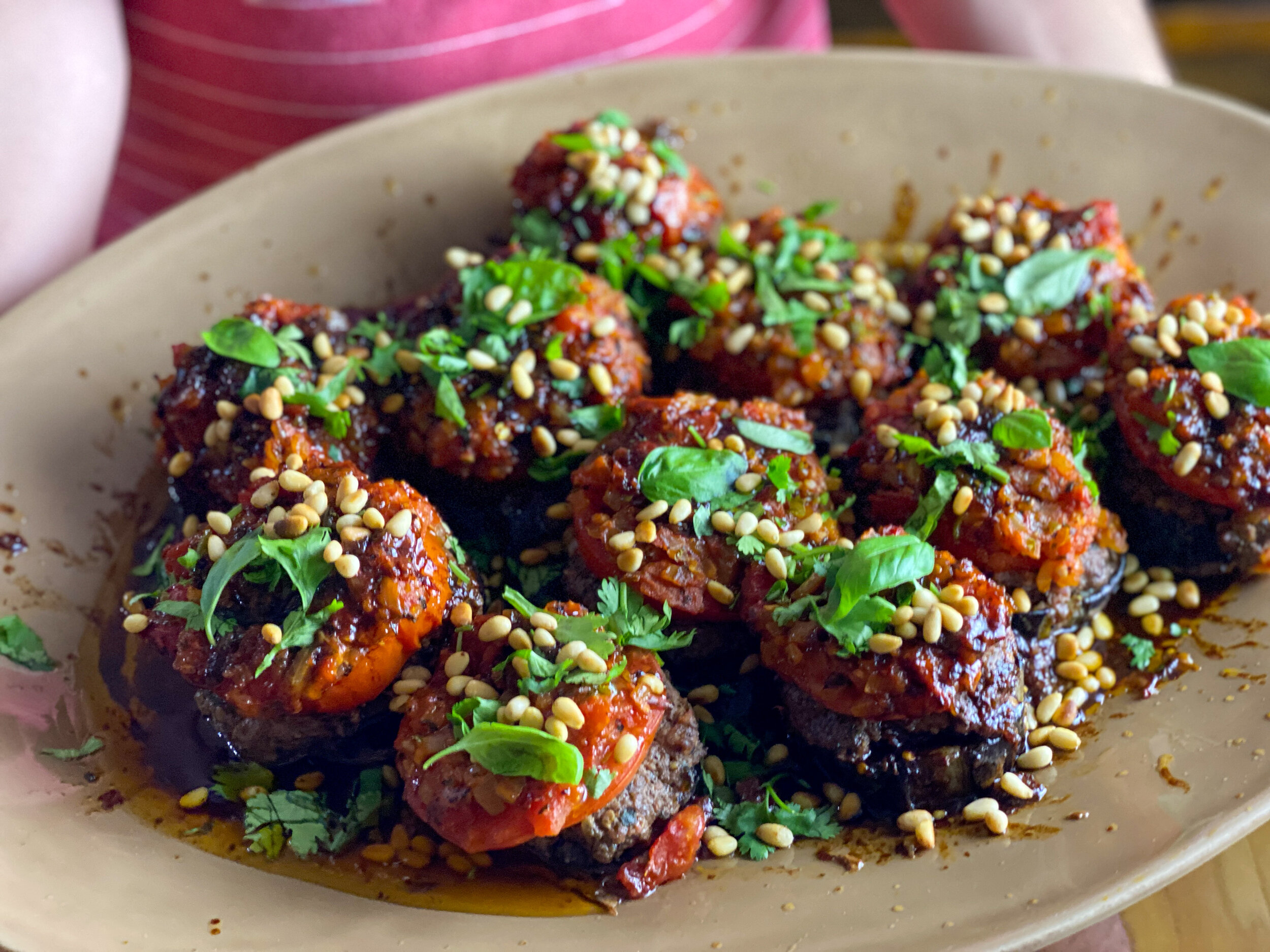By Leslie Brenner
Ripe and bursting with flavor, tomatoes do not want to be fussed with. That’s why some of the most delicious things you can do with them don’t require a recipe.
• Slice them, arrange them on a plate, strew Maldon salt on them, grind black pepper generously, drizzle your best olive oil and serve with crusty bread.
• Want to get fancier? Add dollops of fresh ricotta, or slices of mozzarella, or pull apart a ball or two of burrata and arrange it on top. From there you can add torn basil, a flurry of mixed fresh herbs, or a big handful of baby arugula. If you go the arugula route, a drizzle of really good balsamic wouldn’t be a bad idea.
• Peel, seed and dice ripe tomatoes, put them in a bowl with a good dollop of great olive oil, salt, pepper and lots of torn basil, let it sit an hour or so, then use to toss with pasta. Grated parm or cubed mozzarella optional.
• BLT. This is the best time all year to eat the iconic sandwich. That slab of gorgeous red tomato with all its juices mingles meaningfully with the mayo on perfect toast, hopefully one of those sourdoughs your friend or partner has been perfecting, or good whole-wheat. Cool crunch of iceberg, chewy-crisp, salty-smoky warm bacon: This is sandwich nirvana. To get one made with the proper care and love, you’ll probably have to make it yourself. Eat it alone and enjoy every bite.
• Make a simple, beautiful, easy tomato tart: Roll out thawed frozen puff pastry, poke holes in it with a fork, cover with slices of tomato (lay them first on paper towels, salt them and let them sit a few minutes to get rid of moisture), salt, pepper, thyme leaves and crumbled goat cheese. Bake 25 minutes at 400. Slice and eat. This one gets a recipe.
• I’m not saying you should do this, but one of my mom’s favorite things to eat was juicy slices of tomato on white bread slathered with mayo. Call it a poor man’s BLT. Other times she would hold a large ripe tomato in her hand, take a bite, sprinkle the rest of it with salt and eat it like that, out of hand. This, she told me, was how she liked to eat tomatoes when she was a kid and she picked them, warm and ripe and bursting with flavor, from her victory garden at home in New Jersey during World War II.
Tomatoes à la Provençale, from a Julia Child recipe
• Invite them to the South of France — by way of Tomatoes à la Provençale. Make a filling of bread crumbs, herbs, chopped shallots, garlic, olive oil, salt and pepper and stuff that into half-tomatoes you’ve emptied of seeds and juice. Roast 10 or 15 minutes at 400 and eat. Here’s Julia Child’s recipe, which I’ve been making my whole life.
• Blitz up a batch of Gazpacho Sevillano. Maybe you tried this in May, hoping to usher in summer, but the tomatoes weren’t quite in the mood yet. Now they are. Three pounds of tomatoes, a cuke, a red bell pepper, torn-up day old bread, Sherry vinegar, a couple or three garlic cloves put through a press, a pinch of red pepper, more salt than you think: Into the blender they go, and whirr away. Drizzle in some olive oil while the motor’s running. Some people let it chill in the fridge so the “flavors meld”; I usually can’t wait and just eat it like that, garnished with another drizzle of olive plus diced veg, especially avocado.
• Try a less common cold Spanish soup, Salmorejo, which is Córdoba’s version of gazpacho, garnished traditionally with chopped hard-boiled egg and Serrano ham. Our recipe is adapted from one by superchef José Andrés.
Palestinian Chopped Salad (Salata Arabieh), from ‘Falastin’ by Sami Tamimi and Tara Wigley
• When the tomatoes get ripe, the smart go chopping. Ripe tomatoes are fabulous in the chopped salad that’s ubiquitous on Levantine tables, including Palestinian ones. Cucumbers, bell peppers (red in this case), scallions, parsley, mint and serrano or jalapeño chiles, garlic and lemon join the fun. Our recipe is adapted from Falastin, by Sami Tamimi and Tara Wigley.
























